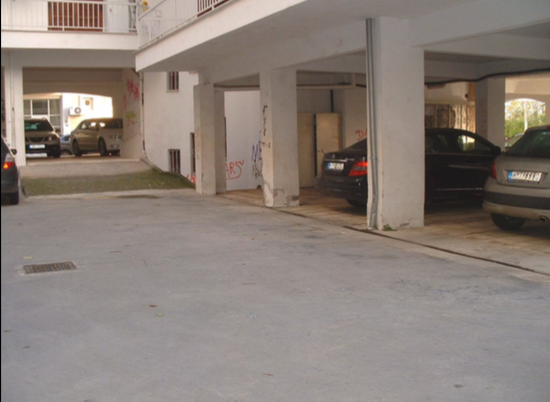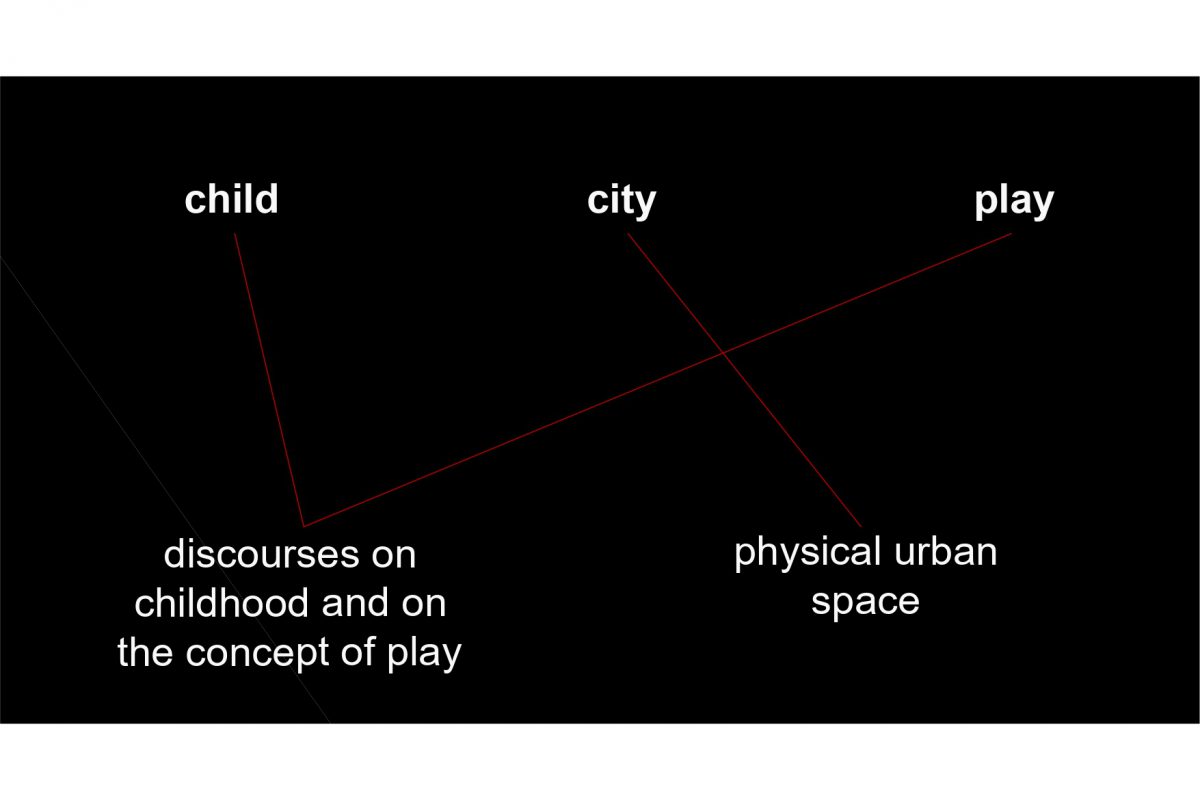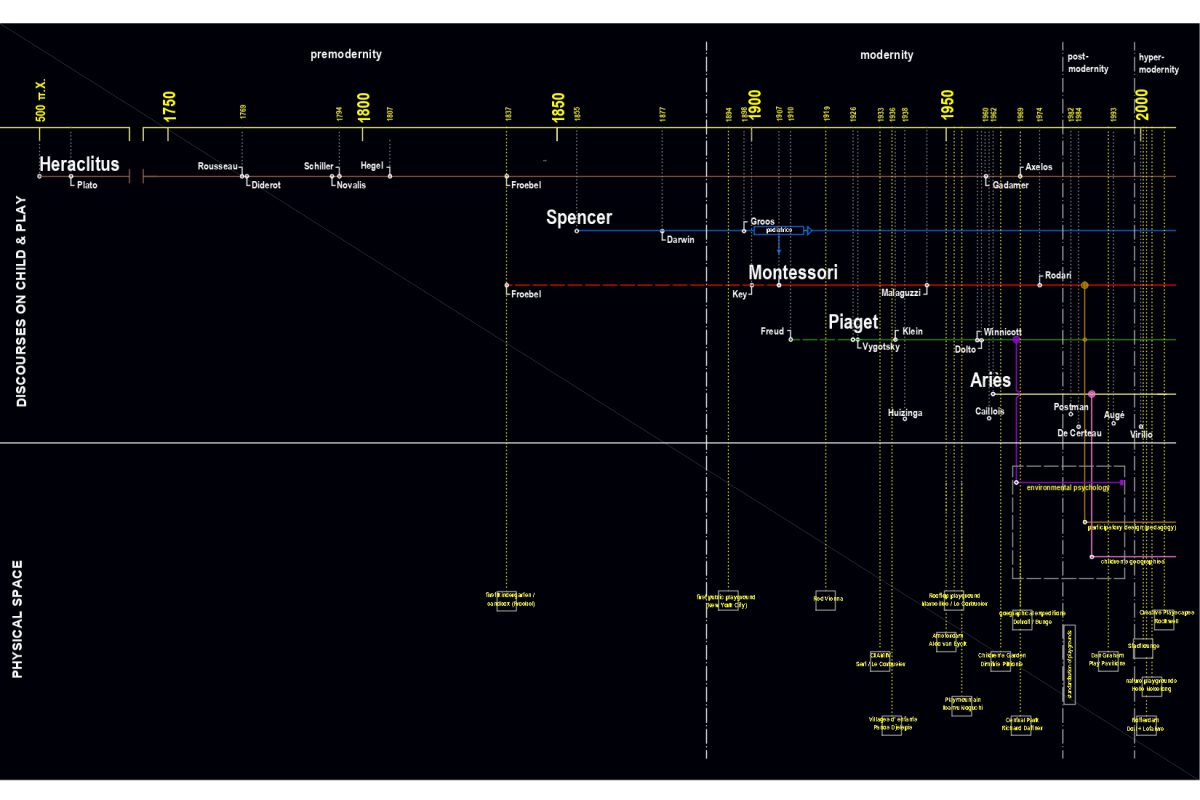
Keep up with our latest news and projects!

As a researcher originating from spatial studies, early on in my attempt to investigate the multi-layered and complex relationship between children and the space of the city, I was overwhelmed with a multitude of questions that intersect this relationship: What is the most adequate method for doing spatial research with children? In what ways can the urban environment operate as a means of education and personal development for the children? How have the needs of the child been dealt with in urban design practice? And, perhaps most importantly, given the powerful narratives of childhood in the city to be found in literature and the cinema, why this relationship has been so far overlooked in urban studies?
If we accept that such questions ‘belong’ epistemologically to different combinations of distinct scientific fields (such as psychology, pedagogy, cultural theory, urban studies), the approach that I propose is the following: to examine the permutations of connections among ‘child’, ‘play’, and ‘city’ knowingly subverting or ignoring already established categorisations. It is a shift from ‘perception-of’ towards ‘involvement-with’, a situation in which the topic, operating much like a gravitational center, can claim to its orbit the participating discourses (Carl 2012). Setting the ‘topic’ itself at the center of our research, we are allowed to narrate this subject’s history, tradition, and – why not – biography.
Starting from the three concepts of the title, we can draw crossing lines that lead the research to two wide areas of research: on one hand, the disciplines that deal with the child and with the concept of play (in a sense, already connected to each other since play is defined as the activity of children or the imitation of such an activity), and, on the other, physical space itself, that is, projects and realisations of spaces for the child in the city. The ‘common ground’ of these two areas is represented in a diagram, in which the timeline of events and influences is charted onto these two parallel fields or topoi.

At the first topos, we can detect a historical succession of different categories of discourses proposing thoughts and theories about childhood and about play. The first in order of appearance is the philosophical one: the case of Heraclitus is most characteristic in this respect. Among his witty, playful sayings, a plethora of references to children and to play can be found; among them, the famous saying “time is a child playing dice; the kingly power is the child’s.” It is important to stress out that, from the antiquity up to the 19th century, thinking about the child was not separate but was included in the philosophical contemplation on the nature of human existence. In fact, the study of the child per se first appears with the advent of modernity; in its initial form, it takes the character of a biological discourse, with writers like Herbert Spencer, in the context of Darwin’s positivism. It continues, in the dawn of the twentieth century, as pedagogical discourse of which Maria Montessori (1967) is the founding figure, which is followed chronologically by the psychological discourse, initiated in the interwar period by Jean Piaget (Piaget & Inhelder 1967). Much later on, in the 1980’s, the sociological discourse on childhood takes over, expressed either in the field of ‘children’s geographies’ (Holloway & Valentine 2000, Aitken 2001) or that of ‘new sociology of children’ (Corsaro 2005). It is noteworthy, nonetheless, that the sociological approach to childhood was based on a historical treatise: Centuries of Childhood by Philippe Ariès (1962). It was Ariès, then, a historian, who was the first to propose what by now is considered commonly accepted: that childhood is not at all ‘primitive’, ‘natural’ and ‘timeless’, but a ‘social construction’.
In parallel to these theoretical discourses, at the second topos, that of physical space, our search for realised or proposed projects regarding children’s play produces far less continuous findings – in essence, they are so few that are isolated events, exceptions to the established canon of design practice, which for the most part ignores the issue of children completely. The first appearance of a material object/construction that defines a ‘special’ area in space for children occurs in Germany, around 1840; pedagogue Friedrich Froebel establishes the first kindergarten and somewhere in its yard creates the first sandbox. By the late 19th century, the ‘founding event’ of design for children in public space takes place: the first playgrounds begin to operate in the quintessential metropolis, New York. Playgrounds are in fact fenced open spaces, where children are gathered often by force, and ‘play’ under supervision by special police agents. The rationale for the establishment of playgrounds was not at all pedagogical or play-centered, but a response to the urban blight of street children, which were presented as ‘public danger’, since they were caught in fights and petty crimes, as well as victims of traffic accidents (Gaster 1992).

Since then, and throughout the twentieth century, despite the ever-growing percentage of children living in urban centers, realised or proposed projects are really too few, thus showing the degree in which children as a users’ group have been ignored by urban design and planning. Despite the fact, for example, that a major personality of architecture such as Aldo van Eyck dedicated most of his work for the benefit of children and practically changed the course of life for generations of children growing up in postwar Amsterdam (Lefaivre & de Roode 2002), he failed to convince his contemporaries or influence the general canon.
Outside these two large areas, there is a sub-area that encompasses what we would call the various ‘interdisciplinary approaches’, occupying a space in-between the discourses on childhood and spatial sciences. Three distinct trends are located there: environmental psychology (Tuan 1974, Hart 1979), participatory design, which has more of pedagogical viewpoint and methodology (Dudek 2005), and the field of children’s geographies, interrelated with the trend of new sociology of children, both of which currently are considered the most contemporary approaches. Most prominent, however, in the children’s geographies is the work of rebel geographer ‘Wild’ Bill Bunge (2011), who was the first to introduce the concept of ‘geographical expedition’ for doing research on the everyday spaces of children. Bunge’s revolutionary work in downtown Detroit in the late 1960’s was based on field observation leading to ‘spatial statistics’ that revealed the patterns of the un-wellness of society. For Bunge, children are like “canaries in a coalmine” – they reflect the pressures of the environment with greater sensitivity, due exactly to their vulnerability.
In the case of my field research, a ‘geographical expedition’ of the city of Veria, a middle-sized town in northern Greece, was performed by the children themselves, using photography as a vehicle. 81 children aged 10 to 12 years took photographs, more than 1,200 in total, of urban spaces where they walk, observe and play. Of these photographs, which are also accompanied by written comments, the most interesting ones are those that present children’s spatial practices in urban space. Such practices fall into the category of ‘tactics’ as opposed to ‘strategies’ (De Certeau 1984); “tactic is an art of the weak,” writes De Certeau (1984: 37). Children’s uses of urban space are based on instant, impulsive responses to opportunities created in the ‘crevices’ of a system of adult strategies. Such strategies include official planning – for example the distribution of ‘uses’ in various segments of urban space –, but also socially accepted practices of adults – for example, the practice of using pilotis for parking. Opposite these strategies, children are responding with tactical movements; wherever or whenever a margin of free space [‘Spielraum’, in German] is allowed, their actions are “procedures of everyday creativity” (De Certeau 1984: xiv).
Therefore, and to return to the beginning, to the search for a new ‘subject’ to express the triptych of “child, play, city”, the research takes the shape of six chapters that can be read independently (‘Introduction”, “Method’, ‘Play’, ‘The everyday’, ‘City’ and ‘Practice), that together make up a polyphonic biography of the Spielraum influenced by fifty-nine ‘characters’. The Spielraum bears four variations of interpretation. In the first one, it means ‘space of freedom’, or the advantage of philosophical contemplation. Peter Bruegel’s painting Children’s Games (1560) is a visual allegory of this interpretation. In its second sense, the Spielraum signifies the power of childhood to perceive or mentally transform the world as a great ‘playing field’ of desires – the movie Red Balloon (1956) by Alfred Lamorisse is a most evocative example of this signification. In its third sense, the Spielraum signifies design responses to the need of children as users to have accessible, creative space, high quality, for play in urban space – the kind of response that Aldo Van Eyck provided in postwar Amsterdam. And finally, as a fourth variation, the Spielraum is the ‘crevice’ in the system. The scene from Akira Kurosawa’s film Ikiru (1952) is a token of representation of this signification: the public servant dies while at the swing of the playground he fought all the way through the movie to see it realised.
Transcending epistemological boundaries, the Spielraum is first and foremost a new paradigm for civic praxis. It is the diagrammatic description of an ‘other’ world, a world in which the spirit of play, of freedom, of creativity, now marginalised by the technocratic production of city space, will guide design; where the city will be taking care of children, because otherwise it would be unworthy of being called a city, to use Aldo van Eyck’s (2008) words; and where design will work together with pedagogy to promote new principles and new values, confirming Henri Lefebvre (1991) that there can be no different society without a different space.
This article belongs to a series of stories about the city at eye level for kids! You can access the full book online in PDF or pre-order your hardcopy to be delivered to your home.
Get the book here– Aitken, S. (2001). Geographies of Young People; the Morally Contested Spaces of Identity. London & New York: Routledge.
– Ariès, P. (1962). Centuries of Childhood: A social history of family life. New York & Toronto: Random House.
– Bunge, W. (2011). Fitzgerald: Geography of a Revolution. Athens and London: University of Georgia Press. First published in 1971.
– “The Point of Reproduction: A Second Front.” Antipode 9, no. 2 (1977): 60-76.
– Carl, P. (2012). “Praxis: Horizons of Involvement ” In Common Ground: A Critical Reader, eds. David Chipperfield, Kieran Long and Shumi Bose. Venezia: Marsilio.
– Corsaro, W. (2005). The Sociology of Childhood. 2nd ed, Sociology for a New Century. Thousand Oaks, CA: Sage Publications.
– Dudek, M. (2005). Children’s Spaces. Oxford & Burlington, MA: Architectural Press
– De Certeau, M. (1984). The Practice of Everyday Life. Berkeley: University of California Press.
– Gaster, S. (1992). “Historical Changes in Children’s Access to U.S. Cities: A Critical Review.” Children’s Environments 9, no. 2: 34-55. – Hart, R. (1979). Children’s Experience of Place. New York: Irvington Publishers.
– Holloway, S. & Valentine, G. (2000). Children’s Geographies; New Social Studies of Childhood. London & New York: Routledge.
– Lefaivre, L. & de Roode, I. (2002). Aldo Van Eyck: The Playgrounds and the City. Rotterdam: NAi Publishers.
– Lefebvre, H. (1991). The Production of Space. Oxford: Blackwell – Montessori, M. (1967). The Discovery of the Child. New York: Random House. – Piaget, J. & Inhelder, B. (1967). The Child’s Conception of Space. New York: W. W. Norton & Co..
– Tuan, Y.-F. (1974). Topophilia: A Study of Environmental Perception, Attitudes, and Values. Englewood Cliffs, NJ: Prentice-Hall. – Van Eyck, Aldo (2008). Writings. Vol. 2: The Child, the City and the Artist: An Essay on Architecture; the in-between Realm (1962). Amsterdam: Sun Publishers.